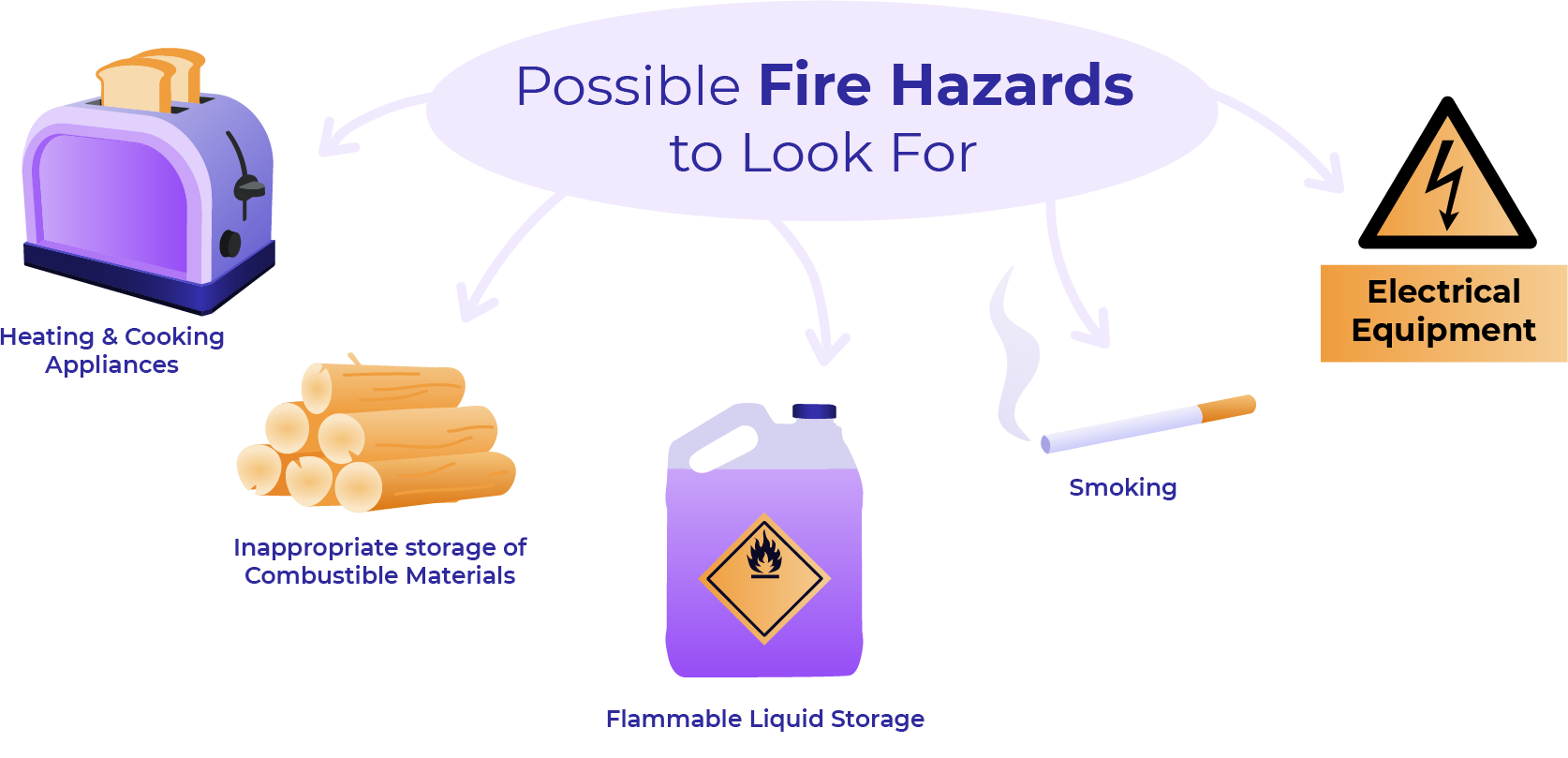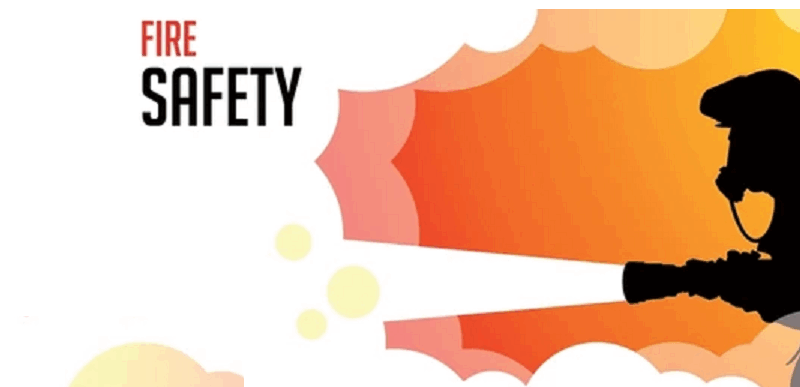Fire Safety in the workplace is everyone’s responsibility. In this guide, we will look at how you can keep yourself and others at work safe.
Fire Risk Assessment
Your employer should have carried out a Fire Risk Assessment. A fire risk assessment is crucial to the fire safety process, you unable to correct and control what you’re not aware of. These risk assessments are performed by the qualified person of responsibility to find potential fire hazards and risks in a building or area.
A fire risk assessment includes identifying what could potentially cause a fire and control measures to reduce the risk of a fire occurring. This may include installing sprinklers or smoke detectors and making changes to wiring, appliances, and storage areas. They are conducted at any time of the year and should be done regularly as part of any routine inspections.
The government recommends that risk assessments should be carried out by suitably competent fire professionals. This Fire Risk Assessor is competent at the prescribed level and can carry out a fire risk assessment of a premises. Many assessors work as specialists in a very particular sector, such as hospitals, construction sites, manufacturing, etc., but they also have a very broad understanding of different industries as well.
Identifying Risks and Hazards, during your Fire Risk Assessment
The number and type of hazards will vary from place to place and sector to sector. However, there are some common hazards that you can identify, and mitigate against.

- Electrical Equipment: Overloaded circuits, lack of maintenance can cause equipment to become faulty. Make sure all electrical work is carried out by qualified electricians and ensure that all portable appliance testing (PAT) is up to date.
- Heating / Cooking Appliances: For cooking appliances, keep things clean. A build-up of materials can catch fire. Take care if wearing loose clothing, and NEVER leave cooking unattended. For heaters, keep them away from clothes, curtains and furniture and never use them for drying clothes.
- Inappropriate Storage of Combustible Materials: Empty bins regularly and keep evacuation routes clear of any flammable materials.
- Flammable Liquid Storage: Glues and other solvents are another source of fires as they are likely to combust if not stored correctly.
- Smoking: Keep designated smoking areas away from the building and provide proper ash bins for disposal near these areas.
Fire Alarm Test
A manual call point should get activated to test the operating effectiveness of the Fire Alarm System to safeguard the persons on work premises. They should be checked weekly once and recorded in your site logbook. Simply activating the alarm at the fire alarm panel, is not acceptable.
Emergency Lighting Test
Every Emergency light, should be tested weekly. This should be logged on the appropriate form. Emergency Lights that do not work, should be fixed, as soon as possible.
Fire Extinguishers
all Fire Extinguishers should be located in a reachable spot. As soon as an employee can identify them, the employees must know which type of extinguisher they are using. Fire Extinguishers should be maintained by a repeatable company, every 6 months.
Keep your Fire Exit Clear
Fire Exits must be kept clear at all times. This means making sure that exits are kept clear from obstructions and exit doors should be well maintained. Panic Bars \ Pads should be easily operable and where Emergency Egress Buttons are present, these need to be tested every week, to make sure they release the doors.
Fire Drills
Fire Drills, should be carried out, either yearly or half yearly, depending on your Fire Risk Assessment. You should aim to evacuate in less than 2 minutes, during a fire drill.
PEEP (Personal Emergency Evacuation Plans)
If your workplace has disabled people, PEEPS must be in place. This should include what help a disabled person requires when evacuation and any reasonable adjustments are needed. This may include escorting someone out of building, special equipment, (such as a EVAC Chair) or providing Refuge Areas.
That is the basics of Fire Safety… More information can be found on the HSE Website.
